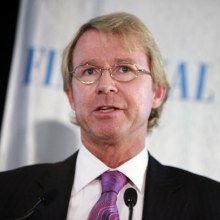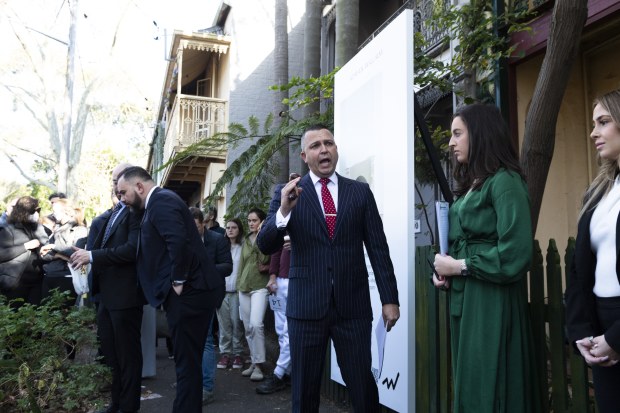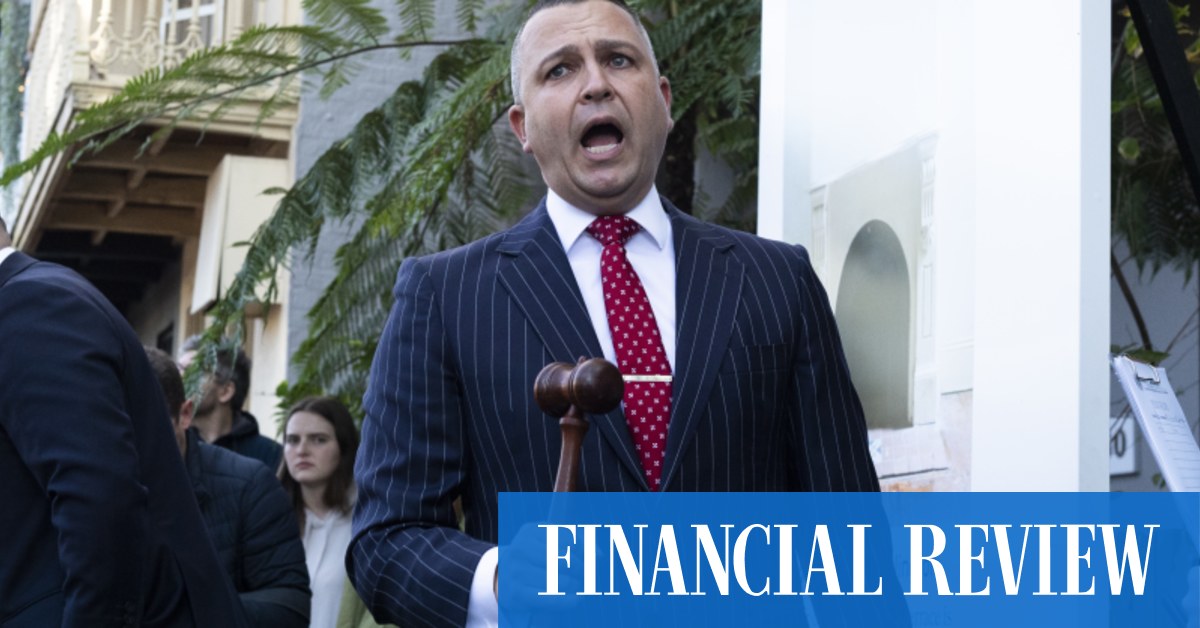“So price falls would be deeper, but we may get to the bottom faster. I was originally thinking the top to bottom falls could drag out into 2024, but it now looks like it could be as short as 12 months.”
Dr Oliver said there were already tentative signs, such as slower consumer spending, that the aggressive rate rises appeared to be getting traction earlier than normal in a tightening cycle.

AMP Capital chief economist Shane Oliver. Jim Rice
“The accelerating pace of home price declines would further depress consumer spending via negative wealth effects,” he said.
“This could prompt the RBA to cap rates around 2.6 per cent later this year or early next year and start cutting by late 2023.”
The downturn in house prices accelerated last month. National values fell 2 per cent over three months, which is comparable to what happened in the 2008 global financial crisis and the recessions of the early 1980s and ’90s. Sydney fell by 4.7 per cent over the period, and Melbourne dropped by 3.2 per cent.
“The fall in home prices this cycle could well see some cities – notably Sydney and Melbourne – reverse all or much of the boom in prices since their 2020 pandemic low, which will likely see a rise in negative equity for recent low-deposit buyers, Dr Oliver said.
Sydney housing values peaked in mid-February, based on CoreLogic’s daily home value index (HVI), and have since fallen by 5.9 per cent, a much faster rate of decline than in the previous 2017-2019 downturn.
Over the same number of days after the market peak in 2017, Sydney housing values were down only 2.9 per cent, CoreLogic data shows.
Fastest rate of decline
“Looking at the decline phases historically using monthly data, this is the fastest rate of decline over the first six months of a downturn since at least the early 1980s when CoreLogic’s HVI commences,” said Tim Lawless, CoreLogic’s research director.
“Sydney’s decline trend started off fairly mild. However, the May rate hike was a clear inflection point in the market, causing the pace of decline across Sydney home values to noticeably steepen and diverge from earlier decline trends.”
Similarly, in Melbourne, housing values fell more sharply, down 3.7 per cent from the market peak in early March, compared with a 1 per cent drop during the 2017-2019 downturn over the same number of days.
During the 2017 to 2019 downturn, Sydney house prices took 22 months from the peak to bottom out. It took another 22 months to post a nominal recovery, data from CoreLogic shows.
In the earlier downturn of 2010 and 2012, Sydney values took 16 months to find a floor and another 13 months to record a nominal recovery.

A home at Darlington in inner Sydney goes under the hamer last weekend. Rhett Wyman
Mr Lawless said similar to the pandemic upswing, which was relatively short but sharp, the downturn could be over quickly.
“It depends to a large extent on the trajectory of interest rates. With forecasts for the cash rate to stabilize either late this year or early next year, and potentially a reduction in interest rates through the second half of next year, we could see housing markets finding a floor and potentially recording a subtle rise as interest rates reduce. ,” he said.
“Considering higher interest rates have flowed through to weaker housing market conditions very quickly, we could see the reverse once rates start to fail. However, it really depends on how high rates go, and how the economy is faring after the surge in interest rates.
“If higher interest rates push the economy into reverse, it may take some time for momentum to shift.”
Rebound could be slower
Dr Oliver said the house price rebound this time could be slower because of persistently high inflation and interest rates.
“The long period of falling interest rates in the past 30 years had supercharged the upswings in the past, like waving a magic wand of interest rate cuts, which guaranteed a robust rebound each time, but we no longer have that tailwind because rates are rising again,” he said.
“The return of immigrants could increase demand and rising rents could attract more investors into the market, which may provide a bit of a burst once interest rates top out and start to fall again, but I suspect that the overwhelming influence will be interest rates.
“We’re unlikely to go back to record low interest rates and therefore the recovery may be a more gradual one compared to, say, the last 30 or 40 years, and may take longer than 20 months before prices reach a new high. I think we’ll probably go through a couple of years where prices rise between 5 and 10 per cent.“
Despite the prospect of sharp price falls in the near term and slower growth over the long term, Sydney investor Deniz Sabuncuoglu remains upbeat.
“I’m one of those people who are bullish about the housing market,” he said. “We’re still planning to expand our portfolio. I understand the possibility of recession and rising inflation can scare a lot of people, especially first-time investors.
“For the medium to long term, I understand there may be some price fluctuations, but as long as rents are coming, we can pass the rate rise through rental increases.
“As long as we stick to our own fundamentals of buying affordable properties between $600,000 and $1.2 million in areas with strong growth prospects, we’re not worried about what’s happening with inflation, interest rates and the possibility of subdued growth.”
